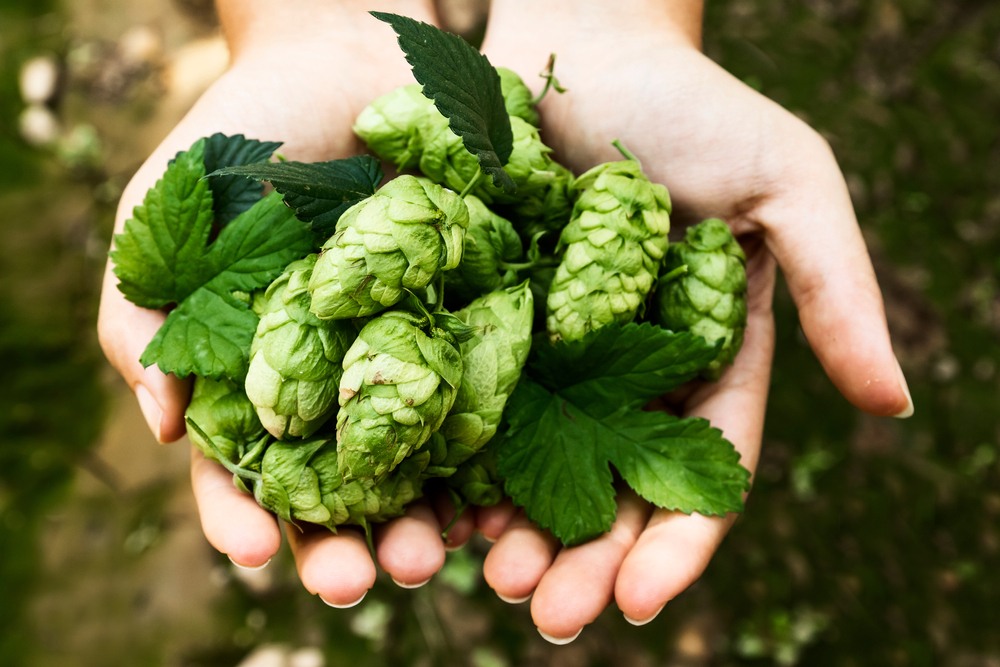What are Hops? In this article, you will learn interesting facts about Hops.
Hops are an essential ingredient in the brewing process, providing beer with its unique bitter flavors and enticing aromas. These fascinating plants belong to the Cannabaceae family, making them a distant cousin of Cannabis Sativa. Hops have been grown for centuries, with evidence of early commercial hop production dating back to the Massachusetts Bay settlement in 1648. Today, hops remain a vital component of beer production worldwide. With a wide range of hop varieties available, their distinct characteristics play a significant role in the flavors and aromas of various beer styles.
Interestingly, hops grow on bines rather than vines, and they always twist in a clockwise direction. These plants have a growing preference for specific latitudes, thriving between the 35th and 55th parallels in both hemispheres. In the craft beer world, International Bitterness Units (IBUs) are used to measure the bitterness imparted by hops, which can range from subtle to intensely bitter, depending on the variety and amount used in the brewing process.
Over the years, researchers have discovered several potential health benefits associated with hops, particularly their sedative effects on the nervous system. The complex flavors and aromas that hops impart to beer make them an indispensable component of the brewing process. As craft beer culture continues to expand and evolve, hop varieties and usage will undoubtedly continue to be a topic of great interest to both brewers and beer enthusiasts alike.
Table of Contents
Hops Biology

Hop Plant Characteristics
The common hop (Humulus lupulus) is a long-lived herbaceous perennial with rough twining stems that can grow up to 8 meters (26 feet) in length1. These stems are called bines, which differ from vines as they grow upward, climbing around a separate support. Instead of using tendrils or roots like vines, bines have stiff hairs to aid in their growth and require sturdy trellises for support1.
Male and Female Hops
Hops plants are dioecious, meaning there are separate male and female plants. The seed cones or strobiles, which are used in brewing beer, are produced by the female hop plant. Male hop plants are typically not used in beer production, as they can cause the female plants to produce seeds, resulting in less desirable flavors2.
Clockwise Growth Direction
An interesting fact about hops bines is that they always grow and twist in a clockwise direction. This unique growth characteristic distinguishes them from other climbing plants and is a key aspect of their biology2.
Cannabaceae Family
The hop plant is a member of the Cannabaceae family of flowering plants, which also includes marijuana. Despite their shared family, hops and marijuana plants have several differences, most notably in their uses and chemical composition. Hops are widely used for their bittering and aroma properties in brewing, whereas marijuana is renowned for its psychoactive effects2.
Hop Varieties
When it comes to brewing beer, hops play a crucial role in imparting unique flavors and aromas. There are over 80+ different varieties of hops, and they can be generally categorized into three main types: Aroma Hops, Bittering Hops, and Dual-Purpose Hops. Each has its distinct characteristics that contribute to the overall experience of the beer.
Aroma Hops
Aroma hops are primarily used for their distinct aromatic properties. These hops have a lower alpha acid content, which means they impart less bitterness when used in the brewing process. Aroma hops are often added late in the boiling stage or during the dry-hopping process to preserve their delicate flavors and scents. Some popular aroma hop varieties include Cascade, Centennial, and Fuggles. Aroma hops are typically used in beers with more subtle flavor profiles, such as pale ales, pilsners, and IPAs (India Pale Ales).
Bittering Hops
In contrast, bittering hops have a higher alpha acid content and are used to add bitterness to balance the malty character of beer. Bittering hops are added early in the boiling process, which allows the acids to isomerize and result in a more pronounced bitterness. Some common bittering hop varieties are Nugget, Galena, and Magnum. The utilization of bittering hops is crucial in the brewing of IPAs and other beers with a more aggressive flavor profile.
Dual-Purpose Hops
As their name suggests, dual-purpose hops can be used for both aroma and bittering properties. These versatile hops typically have moderate to high alpha acid content and also boast unique and appealing aromatic properties. Dual-purpose hop varieties include Amarillo, Simcoe, and Citra – popular choices for brewers looking to achieve a well-rounded flavor profile in their beers. Beers that use dual-purpose hops often strike a balance between bitterness and aroma, creating a multidimensional taste experience for drinkers.
In summary, hop varieties play a significant role in determining the aroma, bitterness, and overall flavor of a beer. Understanding the differences between aroma hops, bittering hops, and dual-purpose hops allows brewers to experiment with various combinations and create diverse beer styles that cater to a wide range of taste preferences.
Hop Cone Composition

Hop cones, also known as seed cones or strobiles, play a crucial role in brewing beer. They are the female flower clusters from the hop plant (Humulus lupulus), a member of the Cannabaceae family of flowering plants. These cones contain essential oils and alpha acids that impart specific flavors and bitterness to beer. This section will explore the composition of hop cones and the roles of essential oils and alpha acids in brewing beer.
Essential Oils
Essential oils are naturally occurring, volatile organic compounds found in various plant parts with distinct flavors and aromas. In hop cones, essential oils contribute significantly to the beer’s overall aroma profile. Some common hop essential oils include myrcene, humulene, and caryophyllene. Each essential oil lends unique characteristics to different beer styles.
- Myrcene: Imparts floral and citrus aroma to beer, adding brightness and freshness.
- Humulene: Contributes a woodsy and earthy quality to the beer, often found in traditional European hop varieties.
- Caryophyllene: Provides a spicy note, reminiscent of cloves or black pepper, and is commonly found in German Noble hops.
The composition of these essential oils can vary depending on the hop variety, growing conditions, and processing methods used during harvesting and storage.
Alpha Acids
Alpha acids play a significant role in determining the beer’s bitterness and contribute to its overall flavor profile. Found in the hop cone’s lupulin glands, these compounds undergo a process called isomerization when boiled during brewing. This process converts alpha acids—such as humulone, cohumulone, and adhumulone—into iso-alpha acids, which are the primary bittering compounds in beer.
- Humulone: The most abundant alpha acid in most hop varieties, contributing to a balanced and clean bittering quality.
- Cohumulone: Imparts a more aggressive and harsh bitterness, with higher levels generally perceived as less desirable in beer.
- Adhumulone: Found in lower concentrations than humulone and cohumulone, adds subtle bitterness to the overall beer profile.
The concentration of alpha acids in a hop variety depends on factors such as cultivar, growing conditions, and the cone’s maturity level at harvest.
In conclusion, hop cone composition is essential to understanding how key components like essential oils and alpha acids contribute to the overall flavor and aroma of beer. Each hop variety has a unique set of characteristics that influence the brewing process and ultimately dictate the beer’s signature profile.
Hops in Brewing
Hops play a crucial role in the brewing process, contributing to the flavor, aroma, and overall character of the beer. In this section, we will discuss the different aspects of hops in brewing, including Flavor Profiles, Impact on Beer Styles, and International Bitterness Units.
Flavor Profiles
Hops can impart a wide range of flavors to beer, stemming from the various oils and compounds found within the hop cones. Some of the primary flavors and aromas contributed by hops include:
- Citrus: Hops can provide notes of grapefruit, lemon, orange, and other citrus fruits.
- Pine: Resinous, piney, and fresh forest aroma can be imparted by certain hop varieties.
- Herbal: Some hops offer earthy, grassy, and herbal flavors that complement other beer ingredients.
- Tropical Fruit: Hops can contribute tropical fruit flavors like mango, passionfruit, and guava, especially in IPAs and other hop-forward beer styles.
Impact on Beer Styles
The distinct flavors and aromas provided by hops can significantly influence the resulting beer style. Here are some examples of how hops impact various beer styles:
- IPA: The India Pale Ale (IPA) is renowned for its strong hop flavors that often emphasize citrus and tropical fruit notes. Hops play a central role in this style, contributing to both bitterness and aroma.
- Pale Ale: Pale Ales showcase a moderate hop presence, delivering a balance of malt sweetness and hop bitterness.
- Pilsner: Hops used in Pilsners generally provide a more subtle, floral or herbal character, complementing the crisp malt profile of this beer style.
- Stout: While Stouts prioritize malt flavors like chocolate and roast, they still use hops to achieve a balanced bitterness to offset the malt’s sweetness.
International Bitterness Units
A beer’s bitterness level is measured using International Bitterness Units (IBUs). The higher the IBU, the more bitter the beer. Here is a general guideline for IBUs in various beer styles:
- IPA: 40 to 80 IBUs
- Pale Ale: 30 to 50 IBUs
- Pilsner: 25 to 45 IBUs
- Stout: 20 to 50 IBUs
It is important to note that some modern craft beers, especially IPAs, can exceed these traditional ranges, as brewers continually experiment with new hop varieties and brewing techniques.
Health Benefits of Hops

Sleep and Anxiety Relief
Hops have been traditionally used to improve the quality of sleep and help with conditions like insomnia. The aroma of hops plays a significant role in providing relief from anxiety and sleep issues. Valerian, a compound found in hops, has been found to aid in sleep and relaxation. By using hops as a sleep aid, overall sleep quality can be improved.
Hormonal Support
Hops contain 8-prenylnaringenin, a phytoestrogen that can provide hormonal support during menopause. This compound has been found to help with transitional hormone changes and reduce symptoms associated with menopause. Additionally, the potential anti-cancer properties of hops are attributed to their flavonoid compounds, such as xanthohumol, which might play a role in reducing the risk of certain hormone-related cancers.
Antimicrobial and Anti-Inflammatory Properties
Another advantage of hops comes from their antimicrobial and anti-inflammatory properties, owing to their bitter acids humulone and lupulone. These properties may help treat arthritis and fibromyalgia, soothing any inflammation and reducing pain. Hops’ flavonoids may also offer antioxidant benefits, which contribute to overall health by combating free radicals that can damage cells.
Cardiovascular Health
Hops have been found to potentially contribute to better cardiovascular health. Xanthohumol, a flavonoid found in hops, has shown promise in improving markers of metabolic syndrome and reducing weight gain, which could indirectly promote a healthy heart. Hops’ anti-inflammatory properties may further enhance cardiovascular health by reducing inflammation in the body, which is known to be a contributing factor in many heart-related issues.



